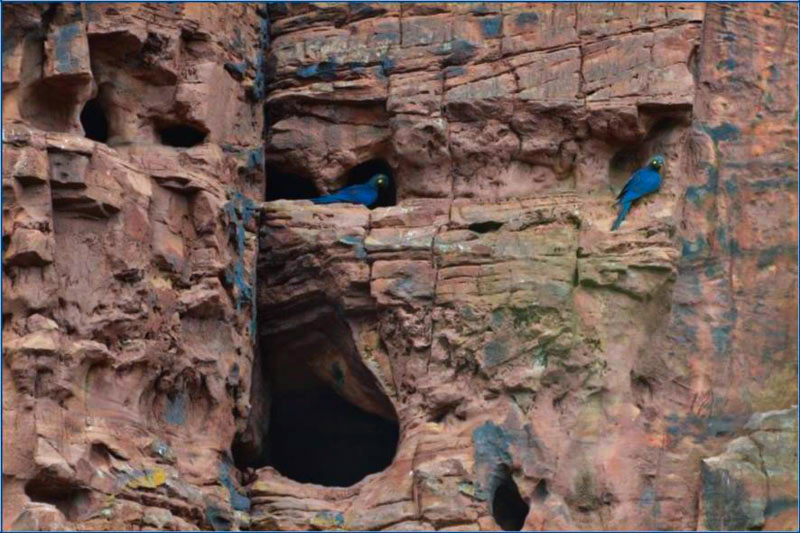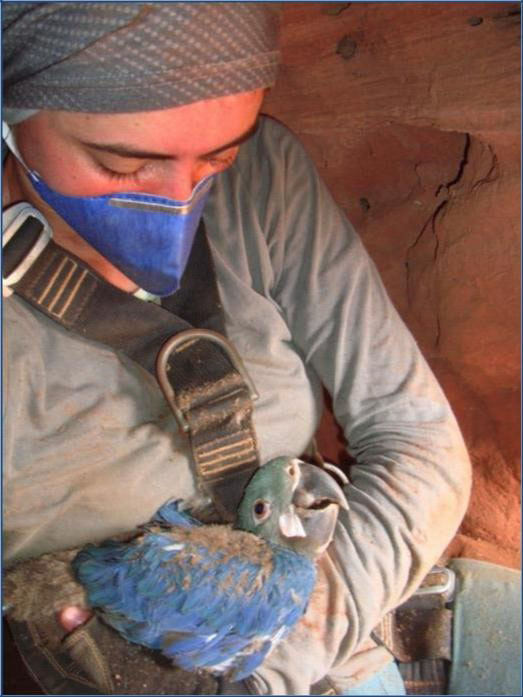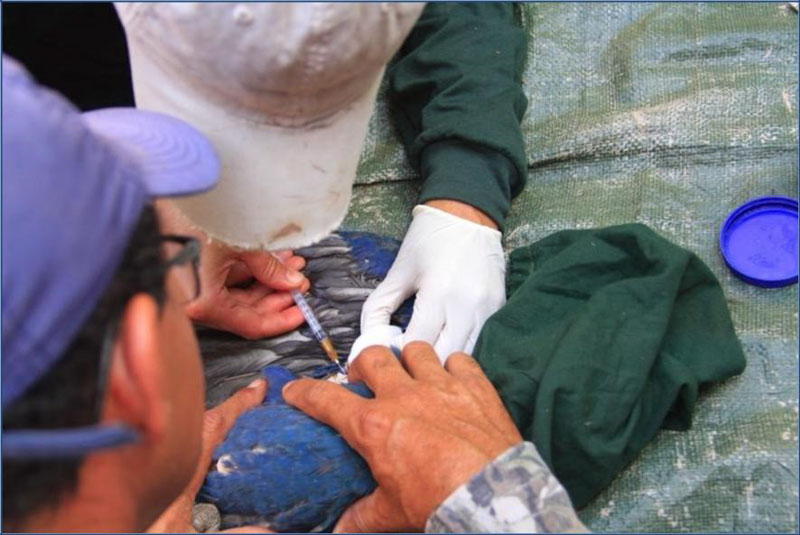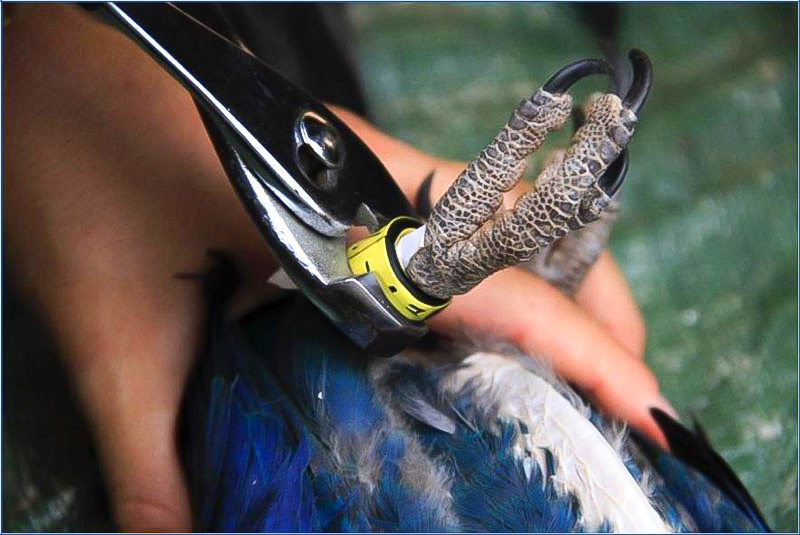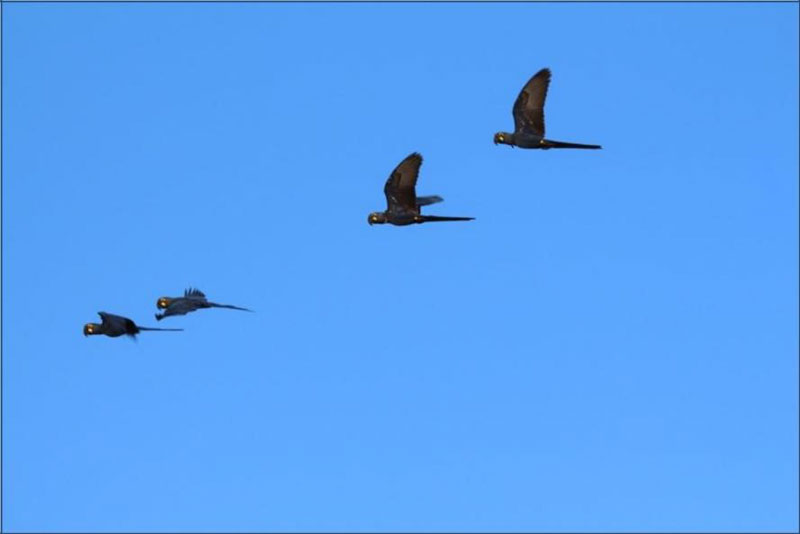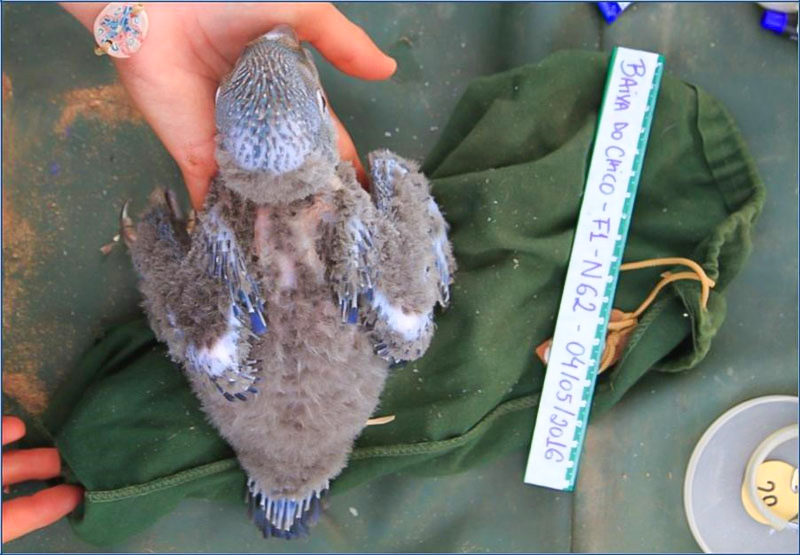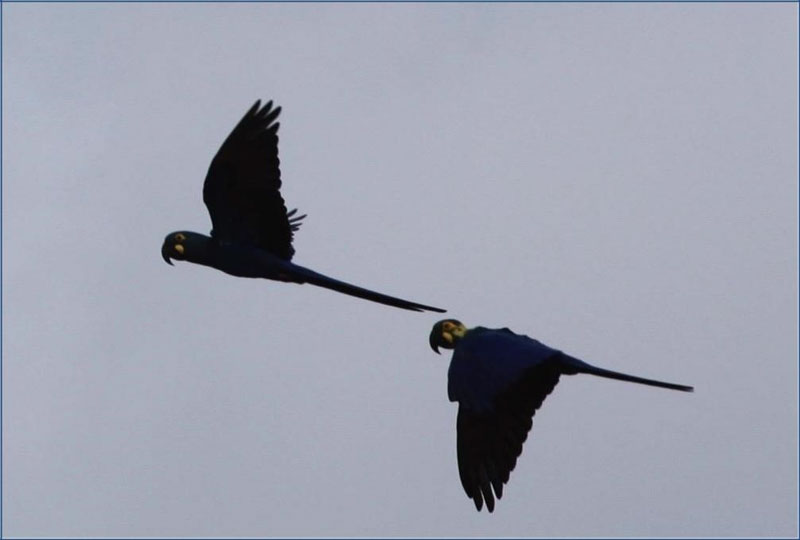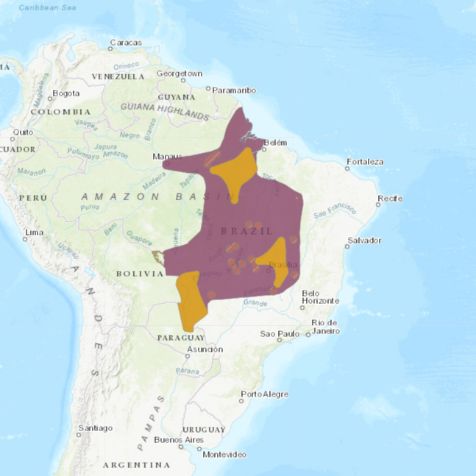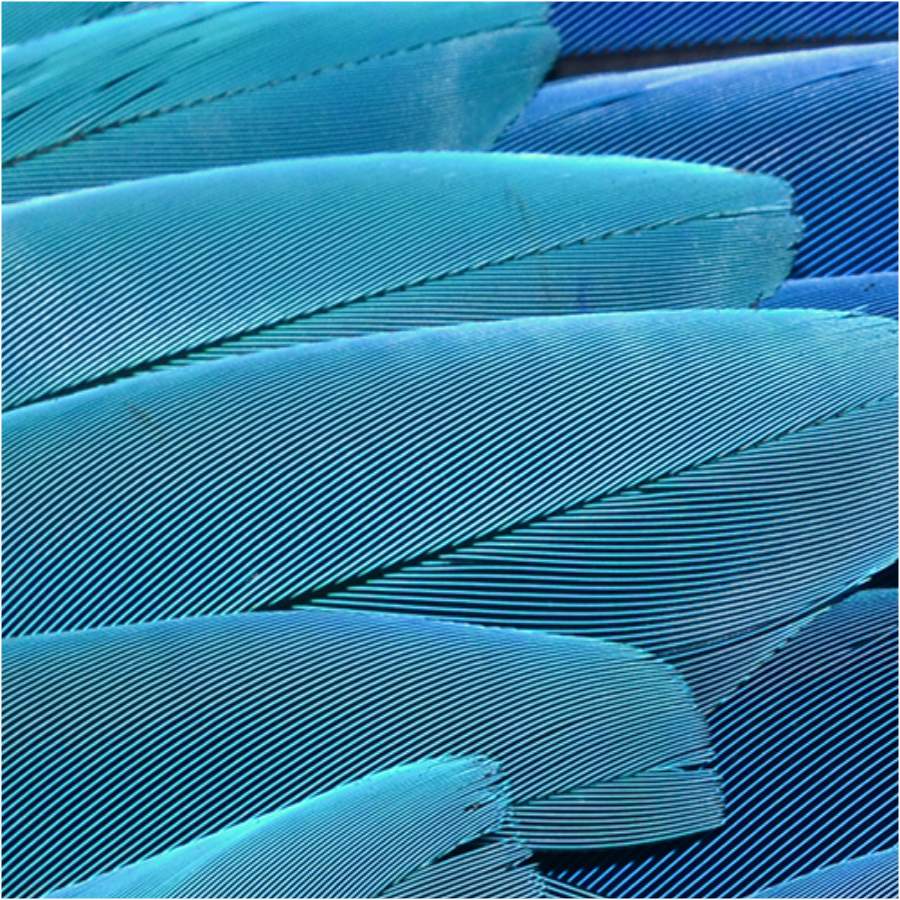Coloration: its coloration is similar to that of A. hyacinthinus, but it is significantly smaller in size. The difference between the two species lies in the tone of the colors: the head and the neck have a greenish blue coloration, the chest is a faded blue color, and the wings and tail are a tone of cobalt blue. They have a light yellow ring around the eye, with white or light bluish eyelashes. The most significant difference is in the form of the wattle (the skin around the jaw). In A. hyacinthinus it is in the form of a strip, while in A. leari it is shaped like a blot (drop).
Reference: GUEDES, N.M.R. 2009 Arara-azul-de-lear. Projeto Arara Azul website. Instituto Arara Azul. www.projetoararaazul.org.br
Status of conservation
Vulnerable (VU) according to IUCN, and Near Threatened (NT) according to MMA (2018).

Source: IUCN
Image gallery
Geographical Distribution
Found in northern Bahia, especially in the Raso da Catarina Ecological Reserve and the Canudos Biological Reserve.
Habitat
In the caatinga region, using areas of walls and canyons of sedimentary rocks for sleeping and nesting and feeding in areas with palm trees.
Behavior
They are gregarious birds and usually gather to spend the night. At dawn they leave the dormitories for eating areas, returning in the late afternoon. During the hottest hours of the day, they remain perched in trees with social interactions.
Food
Seeds of licuri palm (Syagrus coronata), sizal flowers (Agave sp), pine nuts (Jatropha pohliana) and Spondias tuberosa. And when the food shortage is great, the macaws feed on maize (Zea mays) planted by the local population.
Reproduction
They breed in cavities in rocky sandstone walls. Reproduction occurs mainly between September and April. They usually lay three eggs and survive between one and two chicks. The chicks take about 103 days to leave the nest.
Threats
Habitat destruction, hunting and trafficking of wild animals.
Population Size
There are two known populations, one in Raso da Catarina and the other in Boqueirão da Onça. In Raso da Catarina, according to the 2012 Census, there are more than 1200 individuals in that region (ICMBIO, 2012).

